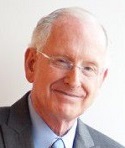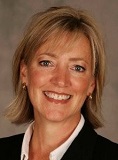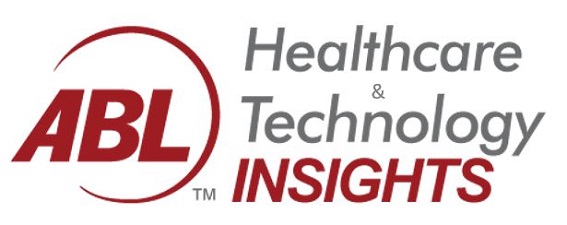
06 Oct Navigating the Prevailing Winds of Change
 Even though Dave Berkus (pictured at right) has been an ABL Technology Member for nearly 32 years, he’s well-known to many of ABL’s Healthcare Members for his awe-inspiring financial accumen and success as a serial entreprenuer and investor in – and advisor to – over 200 startups. He’s also an international speaker, author of several books, weekly blogs, and for over 40 years, he regularly flew his own plane to work! In Dave’s book, Extending the Runway, he masterfully blends his “lessons learned” as an experienced pilot, executive, and investor, packing it with great advice for the leader of any kind of company, particularly those dependent on outside financing.
Even though Dave Berkus (pictured at right) has been an ABL Technology Member for nearly 32 years, he’s well-known to many of ABL’s Healthcare Members for his awe-inspiring financial accumen and success as a serial entreprenuer and investor in – and advisor to – over 200 startups. He’s also an international speaker, author of several books, weekly blogs, and for over 40 years, he regularly flew his own plane to work! In Dave’s book, Extending the Runway, he masterfully blends his “lessons learned” as an experienced pilot, executive, and investor, packing it with great advice for the leader of any kind of company, particularly those dependent on outside financing.
Get Extending the Runway here. [ABL Members: look for your free download of Dave’s book, Extending the Runway, in your October issues of ABL Healthcare Online e-newsletter and ABL Technology Online e-newsletter. Or contact [email protected] for the link to the download.]
 Meanwhile, our newest ABL Technology Member, Cynthia Nelson, President of NexGen Talent (pictured at left), recently shared with her fellow ABL-Tech Orange County Members the results of NexGen’s “Return to Work” Survey, reflecting the C-level responses from 1100 startups to Fortune 10 companies, representing most industries (except education and government). What I found most intriguing about these “real time” survey replies (less than 5 weeks old) is the sea change they represent for California businesses – particularly, for the healthcare industry.
Meanwhile, our newest ABL Technology Member, Cynthia Nelson, President of NexGen Talent (pictured at left), recently shared with her fellow ABL-Tech Orange County Members the results of NexGen’s “Return to Work” Survey, reflecting the C-level responses from 1100 startups to Fortune 10 companies, representing most industries (except education and government). What I found most intriguing about these “real time” survey replies (less than 5 weeks old) is the sea change they represent for California businesses – particularly, for the healthcare industry.
As Dave shares in the opening pages of Extending the Runway, “…part of this book is devoted to finding and then taking advantage of the ‘prevailing winds’ of change that provide business-killing challenges and industry-creating opportunities, sometimes simultaneously.” One of the most important “shifting winds” is the significance of the “WFH” movement. Of the respondents to Cynthia’s “Return to Work” survey, 91% plan to allow their employees to continue to work from home – and nearly two-thirds (62%) will allow their remote employees to move out of state. Hmmm, 62% of 91% equals 56%!
Little wonder that last month, Mark Perry tweeted that the cost to rent a U-Haul 26-foot truck one-way between San Francisco and Phoenix was $2500, 9.6 times the $261 rate from Phoenix to San Francisco; LA-PHX had an even higher cost ratio: 10.6 times PHX-LA. These aren’t just coders moving away: they’re potential patients! The big aha moment of COVID in the spring was the move from in-person to telehealth. NOW is the time to capture patient tele-loyalty, so should your patients move away, you can retain your tele-relationship with them – even across state lines.
And, while the majority (52%) of employers will decide when employees return to “in office work” after a vaccine is widely available, only 18% of these employers will require all employees to be vaccinated, once a vaccine is widely available. Even assuming that percentage of employees vaccinated will be much higher in “patient-facing” healthcare organizations, based on the current spike in COVID cases in many states, and reflecting that the “1918 Spanish flu” had four waves, not just two (the last cases were reported in April 1920), it’s fair to assume that this pandemic will have a long tail.
Now is the time to plan “what if” scenarios – actions you and your executive team will take as your company faces various challenges or opportunities – for the year (or possibly two) ahead. And, the “100 Questions” to use during this virtual or “masked retreat” Planning Session are featured in the first chapter of Dave’s book. Happy reading and planning!
 By Mimi Grant, President, Adaptive Business Leaders (ABL) Organization – Round Tables and Events for CEOs of Healthcare and Technology Companies
By Mimi Grant, President, Adaptive Business Leaders (ABL) Organization – Round Tables and Events for CEOs of Healthcare and Technology Companies

